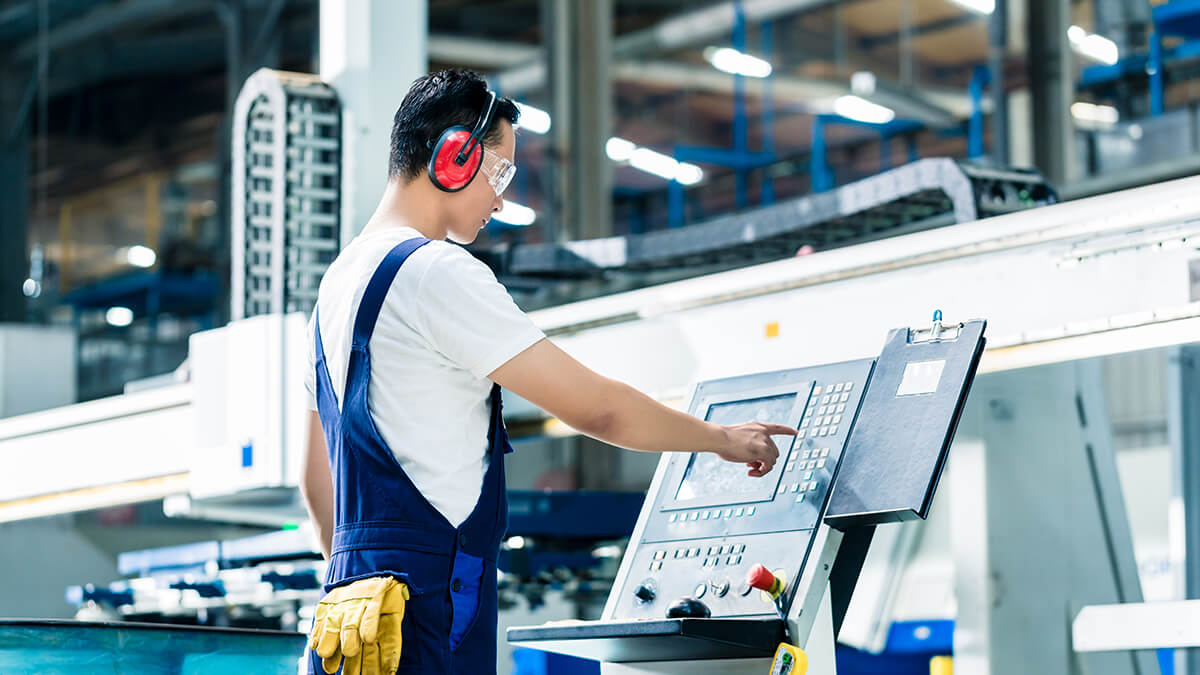Electrical Discharge Machining (EDM) has undergone a remarkable evolution, transforming from a niche technology to a versatile and precise machining method. Key advancements of EDM technology have included the integration of advanced control systems, cutting-edge features, strides in tooling and electrode materials, and the applications and benefits of high-speed EDM.
Evolution of EDM: From Traditional to Modern Designs
The Birth of EDM
The first use of EDM machines dates back to the late 1940s when Russian physicists B. Lazarenko and N. Lazarenko first experimented with the removal of material through electric discharges. Early EDM machines were rudimentary, utilizing point-to-point control systems and basic electrodes. These machines laid the foundation for future developments, marking the birth of a revolutionary machining process.
Transition to CNC-Controlled Machines
In the 1970s, EDM machines embraced Computer Numerical Control (CNC) technology, leading to enhanced precision and automation. CNC-controlled EDM machines allowed for more intricate designs, improved repeatability, and better overall efficiency.
Rise of Multi-Axis Machining
As demand for complex components grew, so did the need for more advanced machining capabilities. With the integration of multi-axis functionality manufacturers were able to produce intricate geometries and intricate parts with unprecedented accuracy.
High-Performance Wire EDM
The introduction of Wire EDM (Electrical Discharge Machining using a wire electrode) marked another milestone. This technology, developed in the 1960s, allowed for the machining of intricate contours with a high degree of precision. Advances in wire materials and tension control further propelled the capabilities of Wire EDM machines.
Integration of Advanced Control Systems for Enhanced Precision
Emergence of Adaptive Control
One of the key advancements in EDM technology lies in the incorporation of adaptive control systems. Adaptive control allows the machine to adapt its parameters on the fly, responding to variations in material properties and machining conditions based on feedback from sensors and monitoring systems that collect data on factors such as tool wear, temperature, and machining conditions. This feature is particularly beneficial in scenarios where workpiece materials exhibit uneven hardness or when dealing with intricate designs requiring dynamic adjustments for optimal results.
CNC Programming Innovations
Modern EDM machines leverage sophisticated CNC programming innovations. High-level programming languages and intuitive interfaces have simplified the process of creating intricate toolpaths. These advancements empower operators to program complex geometries with ease, expanding the possibilities of what can be achieved with EDM technology.
Integration of Artificial Intelligence (AI)
In recent years, the integration of artificial intelligence has taken EDM to new heights. AI algorithms analyze data from sensors and historical machining data, providing insights for real-time decision-making. This level of intelligence enhances predictive maintenance, optimizes machining parameters, and contributes to overall process efficiency.
Enhanced User Interfaces
User interfaces on EDM machines have undergone significant improvements. Intuitive touchscreen displays provide operators with a user-friendly experience, allowing for efficient machine setup, programming, and monitoring. This streamlined interaction contributes to increased productivity and reduces the learning curve for new operators.
Advances in Tooling and Electrode Materials
Evolution of Electrode Materials
The choice of electrode material is critical in EDM, affecting machining speed, wear resistance, and surface finish. Traditional copper and graphite electrodes have given way to advanced materials like tungsten copper and various metal matrix composites. These materials offer improved thermal conductivity, wear resistance, and longevity, enhancing overall machining performance.
Tooling Innovations for High-Speed EDM
High-speed EDM has become a cornerstone of modern manufacturing, allowing for rapid material removal with exceptional precision. Advances in tooling, including the development of high-performance carbide tools and diamond-coated electrodes, have fueled the rise of high-speed EDM. These innovations enable manufacturers to achieve superior surface finishes and tight tolerances at accelerated machining speeds.
3D-Printed Tooling for Customized Solutions
3D-printed tooling has emerged as a viable option in EDM. Customized electrode shapes can be rapidly prototyped and produced, offering flexibility in designing intricate features. This intersection of additive manufacturing and EDM opens new possibilities for creating tooling solutions tailored to specific machining requirements.
Applications and Benefits of High-Speed EDM
Aerospace Industry: Precision in Every Component
High-speed EDM has found a vital role in the aerospace industry, ensuring precision and repeatability in critical components. Turbine blades, complex structural elements, and intricate parts benefit from the speed and accuracy of high-speed EDM, meeting the stringent standards of aerospace manufacturing.
Medical Device Manufacturing: Micro-Precision at Its Best
In medical device manufacturing, high-speed EDM excels in creating intricate and miniature components. Surgical instruments, implantable devices, and other critical applications demand the precision offered by high-speed EDM, particularly when working with a variety of materials, including biocompatible alloys.
Automotive Sector: Meeting Demands for Efficiency
The automotive industry leverages high-speed EDM for the production of precision components in engines, transmissions, and electronic systems. The technology's ability to handle various materials, including hardened steel, contributes to the efficiency and reliability of automotive components.
Tool and Die Manufacturing: Rapid Prototyping and Production
Tool and die manufacturers benefit from high-speed EDM for rapid prototyping and production of molds, dies, and tooling components. The accelerated machining speeds, combined with the precision offered by high-speed EDM, enable manufacturers to shorten lead times and respond quickly to design iterations. This agility is crucial in industries where time-to-market is a critical factor.
Energy Industry: Complex Components for Harsh Environments
The energy sector relies on high-speed EDM for the production of complex components used in harsh environments. For power generation or exploration equipment, high-speed EDM ensures the production of intricate and durable parts capable of withstanding extreme conditions. The technology's versatility in handling various materials adds to its appeal in the energy industry.
Read More
The evolution of Electrical Discharge Machining has seen a remarkable journey from its early days to the current state of cutting-edge technology. In the next articles of this series, we will delve deeper into specific aspects of EDM technology, uncovering the intricacies of micro-EDM, sustainable practices, and the integration of EDM into emerging manufacturing paradigms. Stay tuned for an enlightening journey through the world of EDM.









.png)




